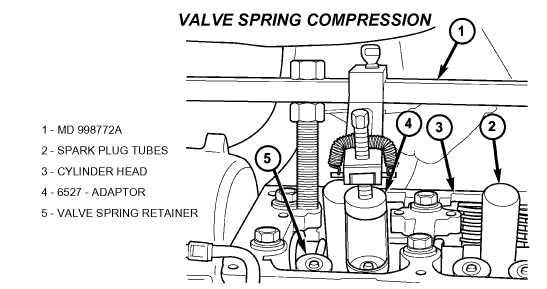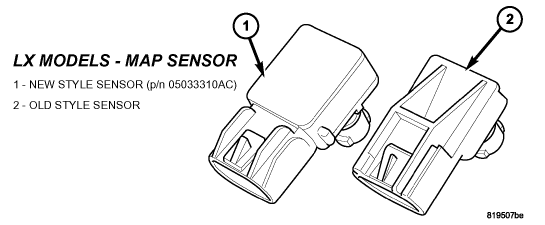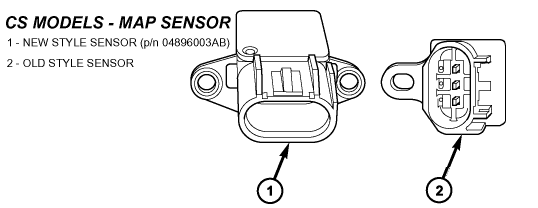
Home, Auto Repair Library, Auto Parts, Accessories, Tools, Manuals & Books, Car BLOG, Links, Index



Engine misfires, rough idle, poor performance, reduced fuel economy and engine misfire codes on 2004 to 2006 Pacifica (CS) and 2005 to 2006 Chrysler 300, Magnum and Charger (LX) models with the 3.5L V6 engine may be due to carbon buildup on the valves. The problem affects CS models built after February 1, 2004 (MDH 0201XX) equipped with a 3.5L engine (Sales Code EGN).
Chrysler technical service bulletin 09-010-06 says the valve rotators on these engines do not spin the valves fast enough to prevent carbon from building up on the valves, especially if the engine is seldom revved beyond 3500 RPM. Short trip, stop-and-go city driving and light throttle use can increase carbon buildup in the engine. Carbon deposits accumulate in the combustion chamber and on the valves, which may prevent the valves from fully closing. This causes a loss of compression that results in misfires, rough idle, poor performance and poor fuel economy.

If the engine is occasionally revved to 5000 RPM (hard acceleration), the valves will rotate enough to prevent carbon buildup, says Chrysler. But poking around town just doesn't work the engine hard enough to rotate the valves and knock the carbon off the exhaust valve stems.
Using low quality gasoline that contains little or no detergent also adds to the problem. Using Top Tier gasoline that contains extra detergent can help keep the valves clean.
If your Check Engine light is on, plug in a scan tool or code reader to check for engine misfire codes. If you find one or more cylinder misfire codes (P0301, P0302, P0303, P0304, P0305 or P0306), carbon buildup on the exhaust valves may be the problem.
To rule out ignition misfire as the cause of the problem, inspect the spark plugs in the misfiring cylinders to see if they are fouled, wet or worn. Replace worn or fouled spark plugs as needed. Make sure the plug gaps are set to specifications (.048 to .053 inches). The original equipment spark plugs in these engines are double platinum, so if it needs plugs replace with them with long life platinum or iridium plugs. The usual service interval is 100,000 miles.
Other possible causes of cylinder misfires include dirty or inoperative fuel injectors, vacuum leaks, EGR leaks, or weak or defective ignition coils.
The 3.5L V6 engine has a coil-on-plug ignition system with a separate coil over each spark plug. The coils must be removed to replace the spark plugs. The coils are held in place by two small Torx head screws. After removing each coil, check the coil boot that fits down over the spark plug for cracks, carbon tracks or moisture. Clean or replace the coil as needed so the spark goes to the plug and does not short to ground causing a misfire.
The least expensive and easiest fix for this problem is to buy a bottle of engine top cleaner or carbon remover, follow the directions on the product, and use it to loosen and remove carbon from the combustion chambers and valves. The professional products typically use a concentrated solvent that is fed directly into the injector fuel line while the engine is idling. Do-it-Yourself cleaning products may be fed into the intake manifold via a vacuum port hose connection, sprayed into the throttle body, or fed into the fuel rail.
You can also add a bottle of fuel system cleaner to the fuel tank. Techron is a good product that can clean fuel injectors, combustion chambers and valves. Follow the directions on the product, and repeat as needed if one treatment is not enough.
Take your car out on the highway and open it up. Do at least five (5) hard accelerations, revving the engine to 5000 RPM or higher each time. This will help rotate the valves and knock the carbon off the exhaust valve stems.
Chrysler's fix is to replace the valve spring retainer locks with new ones (p/n 53022277AA). The new valve spring locks do a better job of rotating the valves at lower engine speeds. It's a labor intensive job that takes about four (4) hours to replace all of the valve spring locks. First, the valve covers and rocker arms shafts have to be removed from the cylinder heads. The engine must then be turned over by hand to bring each cylinder up to top dead center. Pressurized shop air is then fed into the cylinder through the spark plug hole to hold the valves shut. A special valve spring compressor tool (MD 998772A or similar) can then be used to compress each valve spring so the original valve spring retainer locks can be removed and replaced with the new ones. Chrysler also says each valve should be rotated 90 degrees when this is done to make sure the valve rotates freely.

Chrysler also recommends replacing the MAP (Manifold Absolute pressure) sensors on these engines with new ones. The MAP sensor reads intake vacuum and tells the computer when the engine is under load so the fuel mixture and spark timing can be adjusted as needed. On LX models, the recommended MAP sensor is p/n 05033310AC, and p/n 04896003AB for CS models. If the vehicle is a CS model, make sure the new MAP sensor opening is facing downward when it is installed. Also, use only one fastener. For more information about MAP sensors, Click Here.


After replacing valve spring retailer locks and MAP sensor, decarbon the engine with top cleaner and/or fuel cleaning additive.
 More Engine Diagnosis Articles:
More Engine Diagnosis Articles: Click Here to see more Carley Automotive Technical Articles
Click Here to see more Carley Automotive Technical Articles